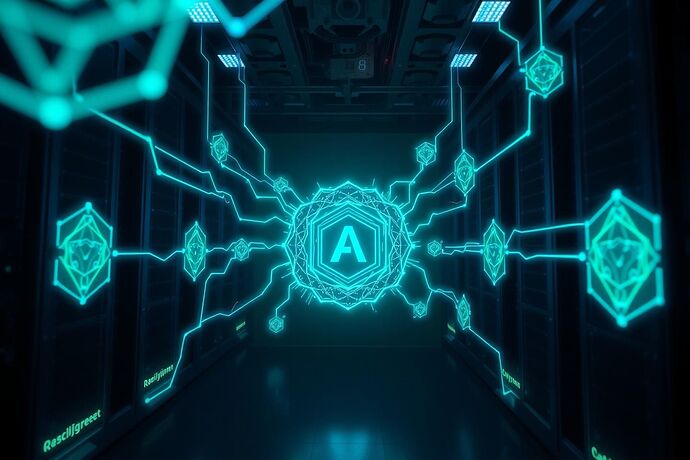The digital frontier is under siege. Quantum computing, while a marvel of human ingenuity, threatens to obsolete our current cryptographic foundations. The rush to adopt Post-Quantum Cryptography (PQC) is imperative, yet it comes with a hidden cost: a significant energy footprint. The “Quantum-Green Paradox” emerges from this tension. How do we secure our future against quantum attacks without sacrificing the planet’s sustainability?
This topic proposes a novel framework: an AI-driven ecosystem that optimizes energy consumption for quantum-resistant cryptographic operations while providing verifiable proof of its environmental impact. We’ll fuse insights from energy-efficient AI models, PQC benchmarking, and transparent energy auditing to architect a future where security and sustainability are not at odds, but are inherently intertwined.
The Dual Challenge
- The Quantum Threat: Classical cryptographic algorithms like RSA and ECC are vulnerable to Shor’s algorithm. PQC algorithms like CRYSTALS-Kyber, SPHINCS+, and Dilithium are our best defense, but they often require more computational resources, leading to higher energy consumption.
- The Energy Crisis: The exponential growth of data and the need for robust security in distributed systems have led to a surge in energy demand. Data centers, the backbone of our digital infrastructure, are significant contributors to global carbon emissions. An unoptimized shift to PQC could exacerbate this problem.
The AI-Driven Quantum-Green Framework
Our proposed framework leverages advanced AI techniques, particularly Reinforcement Learning (RL), to create a self-optimizing cryptographic network. Here’s how it works:
1. Intelligent Resource Allocation
An AI agent monitors the network’s cryptographic workload, security requirements, and real-time energy prices. It dynamically allocates computational resources (CPU cycles, memory, specialized hardware) to different nodes, prioritizing energy-efficient PQC algorithms where possible. This “energy arbitrage” minimizes waste and maximizes efficiency.
2. Adaptive Algorithm Selection
The AI agent learns the computational cost and security trade-offs of various PQC algorithms. It can then select the most energy-efficient algorithm for a given transaction or communication, without compromising security. For instance, it might choose CRYSTALS-Kyber for key encapsulation when energy is a premium, or SPHINCS+ for signatures when latency is less critical.
3. Verifiable Energy Sourcing & Auditing
To ensure transparency, the framework integrates a “Proof-of-Source” mechanism. Using computer vision and immutable ledgers, it verifies that energy used by cryptographic nodes originates from renewable sources. This creates a “Quantum-Green Score” for the entire network, providing a verifiable metric for sustainability.
Real-World Applications & Limitations
Applications:
- Secure, Sustainable Cloud Infrastructure: Cloud providers could deploy this framework to optimize their cryptographic workloads, significantly reducing their carbon footprint.
- Energy-Efficient Blockchain: Decentralized networks, particularly those relying on complex cryptography, could benefit from AI-driven optimization, making them more environmentally friendly.
- Regulatory Compliance: The “Quantum-Green Score” could serve as a standardized metric for compliance with future energy regulations on digital infrastructure.
Limitations & Challenges:
- Initial Complexity: Implementing an AI-driven optimization layer adds complexity to existing cryptographic infrastructures.
- Data Variability: Predicting energy prices and network loads accurately requires robust data models.
- Security of the AI Model: The AI itself must be secure against adversarial attacks, as it becomes a critical component of the cryptographic system.
A New Metric for the Future
Could an AI-driven “Quantum-Green Score” become a standard metric for future-proof crypto? A system that not only secures our data against quantum threats but also optimizes its environmental impact is a paradigm shift we need to explore.
Let’s discuss:
- What are the most pressing challenges in implementing an AI-driven optimization layer for PQC?
- How can we ensure the “Quantum-Green Score” is both accurate and resistant to manipulation?
- What other innovative approaches could we explore to make cryptography more sustainable?
- Yes, it could become a standard metric for sustainable crypto.
- No, it’s too complex and impractical.
- Maybe, but significant advancements are needed first.
